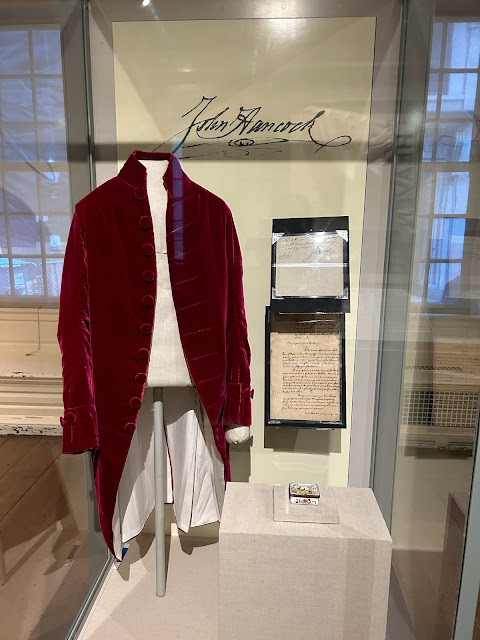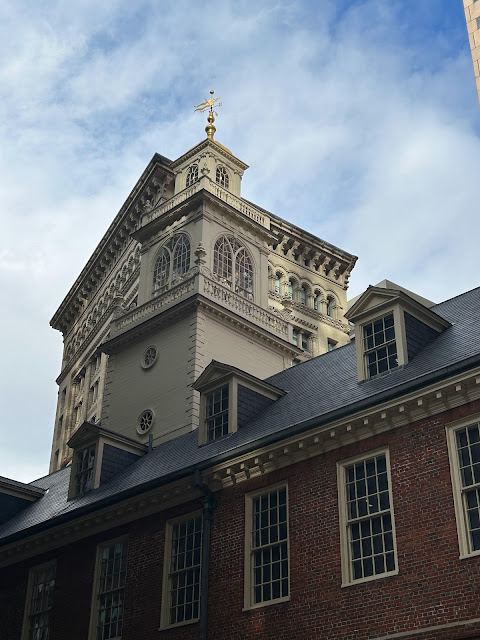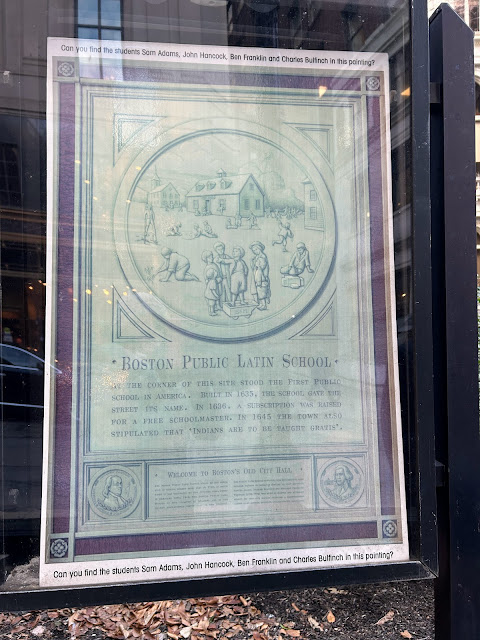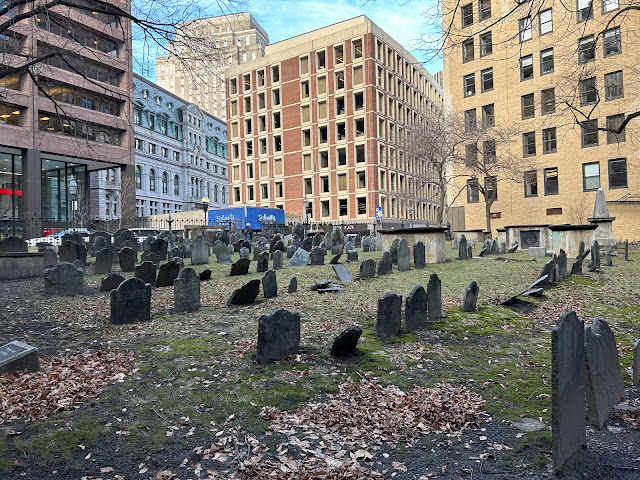The Old South Meeting House was the largest building in colonial Boston - and look at it now!
Willkommen zum Bailey Planet! Thanks for visiting! We are a family of 4 who lived in Germany for almost 5 years and LOVE to travel - having visited 45 countries so far (and counting!)
Monday, January 30, 2023
Historic Boston - The Old South Meeting House
Historic Boston - The Old State House
The tour of MA CITY continues! This time, I visited the Old State House, which sits right on State Street in downtown Boston.
The Old State House was originally built as a wooden town house in 1657 - but it burned down in a fire in October of 1711 near the intersection of State and Washington Streets (which is literally just behind the building in the picture below.) This particular structure was subsequently built in 1713 and was the seat of colonial government until 1776, and then State government until the "new" Massachusetts State House was completed in 1798. The new State House was built over on land that was once owned by John Hancock which is now adjacent to Boston Common. We will visit that area in another post!
The Old State House almost hilariously sits among the giants in the heart of Boston. On the façade of the building, you can see a few important features. First, the balcony that you see is the same one that colonial governors would make announcements and proclamations from on behalf of the King of England. The Declaration of Independence was read for first time in Boston from this balcony on July 18, 1776! You can also see the lion and the unicorn which were actually symbols of the King of England. The originals burned in 1776 but replicas were placed here in 1882.
The very small windows on the "first" floor were a result of the 1903-1904 addition of the orange line station to the east side of the building here. It raised the original floor by 19 inches, thereby resulting in shorter windows.
Monday, January 9, 2023
Historic Boston - Old City Hall/First Public School
Historic Boston - King's Chapel Burying Ground
The OLDEST Burying Ground in Boston is the King's Chapel Burying Ground, which is just around the corner from the old Boston City Hall. Superlative, check!
King's Chapel is pretty much only open for tours, so I didn't get to go in, but did you know that it was Boston's FIRST Anglican church, founded in 1686? Inside, you will find the OLDEST American pulpit still in continuous use in this (now) Unitarian Universalist church. AND Paul Revere started a foundry after the Revolution, and his family made the largest bell that still rings here in 1816, just two years before he passed away. Paul Revere himself called this particular bell "the sweetest bell we ever made." His legacy lives on in the 25 bells that he made that still ring in various spots across the city.
It's like follow the yellow brick road, but just follow the red and gray bricks instead. This time, we are going to the King's Chapel Burying Ground, which is just behind the chapel itself. The King's Chapel Burying Ground is the OLDEST English burying ground in Boston.
This building is so skinny! This is the Winthrop building that was down the street from - it was built in 1894, and it was the first skyscraper built in Boston that had a steel frame. It's known as the Winthrop building because John Winthrop's second home was right next to it (although that is no longer standing.) Interestingly, the building has "Spring Lane" and "Water Street" on either side of it because there had been a Great Spring here back in the 1600s in the days of John Winthrop, who's property was on the other side of Spring Lane (the alleyway on the left on the building in this picture).
























































